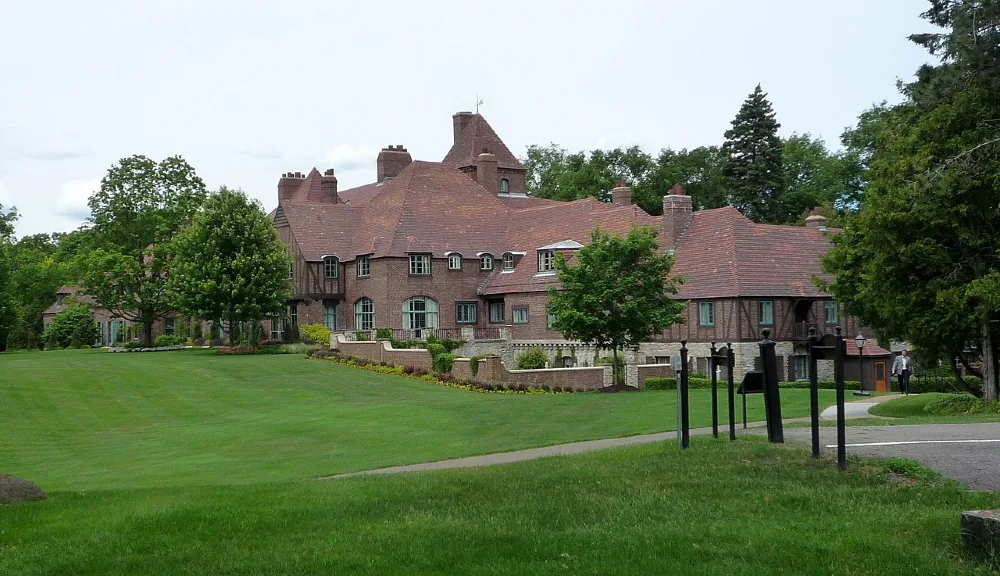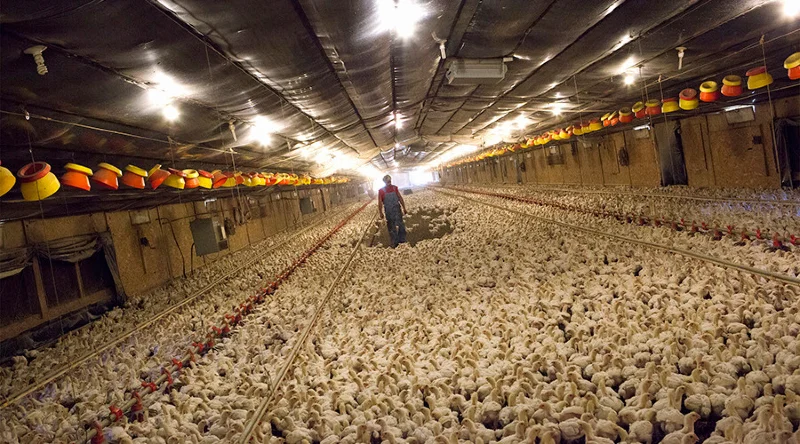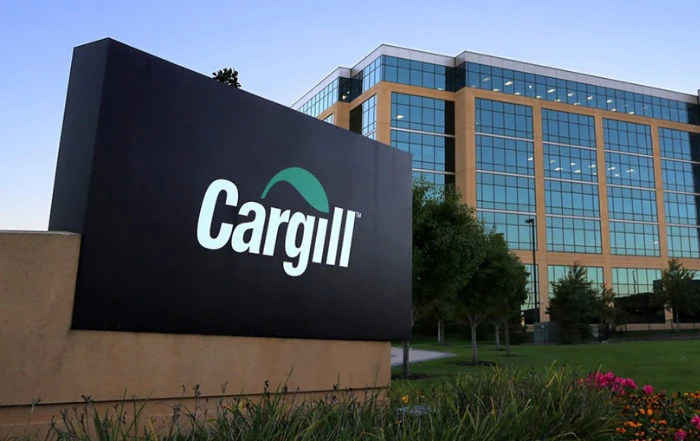The Rise & Reign of Cargill
There’s blood on the hands of the Packers and leaders in Washington, and no one seems to care. Cargill Incorporated, the biggest privately owned company in America, takes capitalism to a whole new level. With an intelligence operation bigger than the CIA and near complete control over the food industry, they have been called the worst company in the world (and not just by us).
Their power and influence span over a century of consolidation and mergers, aiming to control every aspect of the food economy.
From their All-Burger brand to plant proteins, asphalt rejuvenators, and partially hydrogenated products, Cargill’s reach extends into every corner of the food market, ensuring they make a profit from almost any food you buy.
However, their dominance comes at a price.
Cargill’s stronghold has kept wages down, undermined worker power, squeezed family farms, and manipulated prices for consumers like you.
As alarming as their current influence may be, Cargill’s ambitions to expand even further loom on the horizon. They have their sights set on absorbing a chicken empire, which would only amplify their ubiquity and control.

The Cargill McMillan family, who owns 88% of the company, has amassed a total wealth of at least $60 billion dollars, with a minimum of 14 billionaires among them. If Cargill were a publicly traded company, their wealth would likely be three times higher.
To understand how such vast wealth and control ended up concentrated in so few hands, we must delve into the roots of Cargill’s history, dating back 127 years.
The company began in 1865 with the acquisition of a single grain storage warehouse, just as the Civil War came to an end. Riding the wave of expanding railroads across the American West, Cargill’s facilities followed suit. At the time, they didn’t directly own farms or produce anything. Instead, they focused on profiting from grain by controlling infrastructure and storage.
As the family grew in influence, strategic alliances through marriages solidified their power. W.W. Cargill arranged the marriage of his daughter Edna to John H. McMillan, whose family already owned numerous grain warehouses. The merger between the two families created the entity we now know as the Cargill McMillans.
By the early 1900s, Cargill had established such dominance across various industries that Midwest grain farmers found it impossible to conduct business without Cargill’s involvement. Even the outbreak of World War I became an opportunity for profit.

Expanding beyond the Midwest, they built what they internally referred to as the “endless belt” – a metaphorical conveyor belt spanning the nation. This belt transported wheat from a farm in western Iowa to a mill in Chicago, where it transformed into flour. From there, it journeyed to a bakery in Pittsburgh, where it became a Kaiser roll, and ultimately reached a deli in New York City, turning into a delectable Reuben sandwich.
Cargill’s plan was simple: profit at every step of the supply chain. They sold seeds and supplies to farmers, controlled grain storage, supplied tools to mills, sourced ingredients for bakeries, and even provided curing salt to delis. They owned the transportation systems as well. The longer the journey, the more money flowed into their coffers.
From Private Wire Systems to Manipulating Markets: Cargill's Power Plays
In 1924, Cargill made a strategic move by acquiring the Taylor and Bournique Company, a competitor with a unique technology called a private wire system. Think of it as having your own internet at that time. Even in the era of modern internet, we find ourselves captivated by our computers, and back then, this technology was revolutionary. Incredibly, the private wire system remained in operation until 1996, long into the internet age.
Having quick access to reliable information was crucial for Cargill, as they ventured into commodities futures trading. This form of trading involved speculating on the future prices of essentials like wheat, corn, and meat. Much of this activity took place at the Chicago Board of Trade, resembling the stock market scene we often imagined as children—a room filled with shouting men discussing the price of a bushel of wheat.
Novelist Frank Norris painted a vivid picture in his work “The Epic of the Wheat,” highlighting the immense power held by these traders: “Think of it, the food of hundreds and hundreds of thousands of people just at the mercy of a few men down there at the Board of Trade. They make the price. They say just how much the peasant shall pay for his loaf of bread. If he can’t pay the price, he simply starves.”
Cargill, with its vast network and diversified business arms, established information superiority. When they received critical information affecting wheat prices at one location, they could instantaneously transmit that knowledge to other locations and adjust their investments accordingly. This consolidation of resources allowed Cargill to access the best information at all times.
While this may sound akin to insider trading, it is actually considered legal in commodities trading. Unlike stock trading, commodities trading is the only major U.S. market where companies are permitted to act on inside information to manage risks that others may not be aware of.
This aspect of the futures markets was intentionally designed.
Leveraging this advantage, Cargill managed to profit from the Great Depression and the devastating Dust Bowl of the 1930s.
The Dust Bowl, largely caused by the rapid expansion of agriculture into the American prairie led by companies like Cargill, wreaked havoc on the ecosystem. The Great Depression, on the other hand, was fueled by rampant speculation—an area where Cargill excelled.
Interestingly, Cargill’s CEO at the time, John McMillan Sr., placed the blame for the Depression squarely on the labor movement, claiming that demands for a reduced workweek to 40 hours increased costs to unsustainable levels.
While grain prices plummeted during the Depression, the Dust Bowl triggered a shortage, causing prices to soar. Cargill, thanks to its extensive intelligence network, had predicted the impending corn shortage and stockpiled the grain.
The public took notice, and for the first time, there were attempts to regulate Cargill’s business practices. The Chicago Board of Trade even banned Cargill temporarily, and New Deal programs sought to curtail consolidation and regulate speculative practices.
However, Cargill’s executives skillfully argued against these regulations, lobbying both the public and officials within the FDR administration. They advocated for cost-cutting measures on labor instead. Their efforts paid off, as the Department of Agriculture ultimately agreed to a self-regulation plan, granting the grain trading industry near-complete control over its own regulation.
In the ensuing decades, Cargill continued its expansion, acquiring various companies, from agricultural businesses to seemingly unrelated ventures like Las Vegas casinos and Tokyo love hotels.
Of course, Cargill didn’t pioneer this empire-building tactic. Nestle has been committing crimes to fuel their expansion for over a century as well.
Cargill: The Meat Industry Titan and Its Far-Reaching Impacts
Notably, Cargill has made significant strides in dominating the meat industry. Among the four major meat companies—Tyson, JBS, National Beef, and Cargill—they collectively control a staggering 85% of the world’s meat supply. They possess the power to determine prices, regulate supply, and dictate what ends up on our plates and at what cost.
Despite using the guise of inflation to justify price increases, these companies believe they are doing us a favor. According to their perspective, “You can’t have a bunch of small players delivering such an important food source to the nation’s consumers. You have to have larger companies that can do it cheaply and can keep costs down.”
Consolidation has led to the creation of an enormous corporation, still privately owned, with 88% ownership held by the Cargill McMillan family. Being a private entity, Cargill isn’t obligated to disclose its financial information to the public.
While the family’s direct involvement in managing the company has diminished over time, they continue to wield substantial influence on the board. However, the day-to-day operations are primarily overseen by external executives. Nevertheless, the family still reaps the benefits of the company’s success.

Dividends, periodic payments made to shareholders by corporations, proved exceedingly lucrative for the Cargills in 2020.
They received a staggering $1.13 billion in private dividends, which is 44,000 times more than the average income of an American family farm during the same year.
Although Cargill Inc. and the Cargill McMillan family are separate entities, the company’s fiduciary responsibility is to generate wealth for the family. Disturbingly, their power continues to grow, thanks in part to a pro-corporate government.
When Cargill faced accusations of using child slaves in the Ivory Coast, the Supreme Court dismissed the case, citing a statute that prevented foreigners from suing corporations in American courts.
The Commodity Futures Modernization Act of 2000 further eroded the limited regulations governing speculative commodities, enabling Cargill to establish hedge funds that invested in commodity futures—a market it controlled.

With ambitions for expansion, Cargill recently merged with Sanderson Chicken, the third-largest chicken producer in America.
While a coalition of senators urged the Department of Justice to investigate and halt this mega-merger, citing concerns about consolidation and illicit practices that harm both farmers and consumers, the deal was allowed to proceed with a single condition: the combined companies would cease using the tournament system, where top-performing workers’ bonuses were deducted from the paychecks of lower-performing workers—a practice facilitated by consolidation.
Just two days after this announcement, many employees and all growers were presented with a pay plan in a “take it or leave it” manner, reflecting the relationship with Sanderson.
They informed them that their income would be reduced by one-third, and regardless of whether they signed the contract, this pay cut would apply to all Sanderson growers solely within the state of Mississippi. Treating employees poorly becomes more convenient when others in the industry engage in similar practices.
More To Discover
- Behind The Scenes Of How Tyson, JBS, Cargill, and National Beef Use Consolidation And Auctions To Control The Beef Industry
- The Beef Industry’s Big Four: A Farmer’s Perspective
- How Four Companies Control the Beef Industry: The Aftermath of The Battle for Competition and Livelihoods
- Who’s Really Feeding Your Pet? These Big 6 Control 90% Of The Market And Owns 106 Brands
Furthermore, the companies were required to pay a fine, totaling $85 million. However, this sum pales in comparison to the immense wealth accumulated by the Cargills. This wealth came at the expense of small-scale farmers, workers, consumers, and the environment.
Cargill stands as one of the world’s worst polluters. A portion of the Cargills’ $40 billion fortune was undoubtedly acquired at the cost of individuals like yourself.
Every Brand Owned By Cargill
- Purina
- Honeysuckle White
- Nutrena
- Sanderson Farms
- Crisco
- Diamond Crystal
- Ambrosia Chocolate Resource
- Merkens
- Maverick
- Shady Brook Farms
- TNT
- EWOS
- Leonardo Olive Oil
- Angus Pride
- Truvia
- Exel
- Preferred Angus
- Sterling Silver
- Horizon Milling
- Nature Works


















